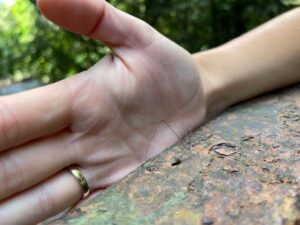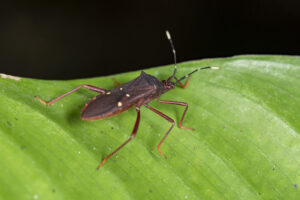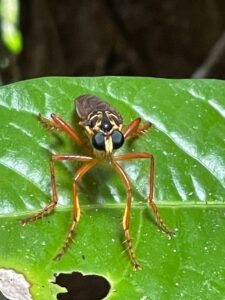Macro photography allows you to photograph small details through your lens. By using a macro lens, you can get much closer to your small subjects. This makes photographing something very small seem much larger and more impressive, that’s the magic of nature macro photography.
First of all, the basic rule of close-up photography is to get close to the subject. Nature macro photography requires a lens that allows you to focus very close to the subject. A macro lens allows you to photograph your subjects almost life-size.

Here we give you 5 useful tips for your macro photography experience in Costa Rica:
Be alert, pay attention, and be patient
As in all photography, keeping your foreground images simple can give you the most dramatic and beautiful results. Patience and persistence will pay off. Good depth of field and isolating your subject are two points to remember for great nature macro photography.
Slow down and look around you. Before you start shooting, choose not only your subject but also your focal point. Sometimes you will have a bouquet of the same flower to choose from when selecting, looking for unique or quirky characteristics of the flowers.


Take care of the lighting.
Insects are more mobile in hot weather, so photograph them in the early morning or evening when it is cooler and they will move more slowly. The light available at those times of the day will also be more flattering. It doesn’t have to be a golden hour. Look for reflected light or interesting sources of direct light.
Highlight what is most important.
Insects have fascinating bodies, and one of the goals of nature macro photography is to bring out all the color and detail in insect life. Good macro photography puts the camera’s focus on the eyes, legs and body of these critters, and on their tiny world.
In portrait photography I know it’s a very common idea to “expose to the right”, however in macro it’s better to expose for highlights.
Take care of your angles and what you see behind.
If both the subject and the background are brightly lit, it can be difficult to separate the insect from its surroundings. Placing a household item such as a piece of cloth or paper behind the subject can function as a portable studio backdrop, isolating the insect against a plain background and setting it apart from its surroundings.
If you can’t move the subject, what you can do is move yourself. Change your angle if it doesn’t work for you.
Choosing your shooting location and angle pay attention not only to your subject but also to your background. Make sure you don’t have any distractions or ugly split backgrounds.

Consider the breeze.
Sometimes you have to wait for the wind to die down. As advice you can block the breeze with your body.
Our privileged geographic location in Tarcoles, Costa Rica, in addition to well-maintained trails, paths, and flora, offers a wide variety of photographic opportunities for people of all ages and interests. At Mangrove Birding Journeys we have designed a tour for anyone of any experience level. from the average young person who wants to try to get a good flower photograph to the professionals, who are looking to collect more stock images for their portfolio.
https://www.nikonusa.com/en/learn-and-explore/a/ideas-and-inspiration/macro-photography-tips-photographing-insects-and-other-small-creatures.html
https://clickitupanotch.com/nature-macro-photography-tips/
